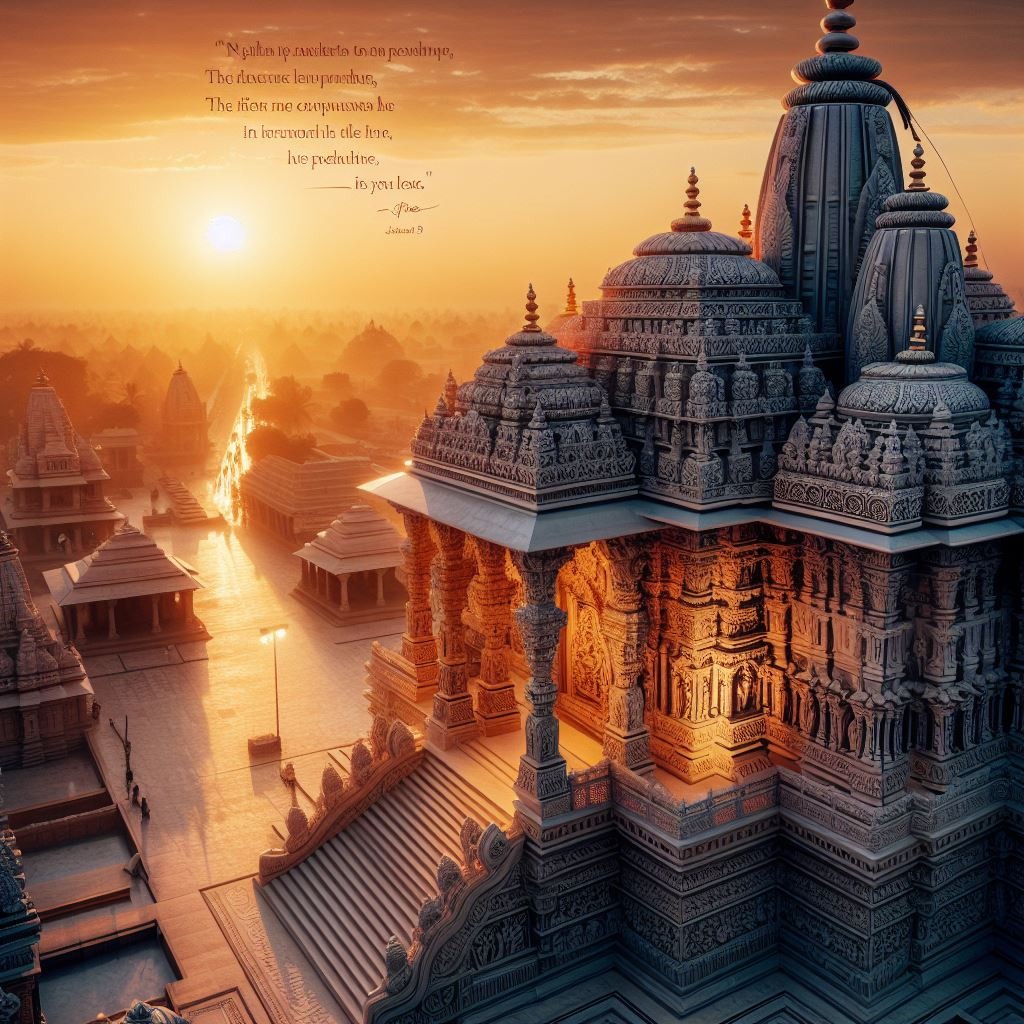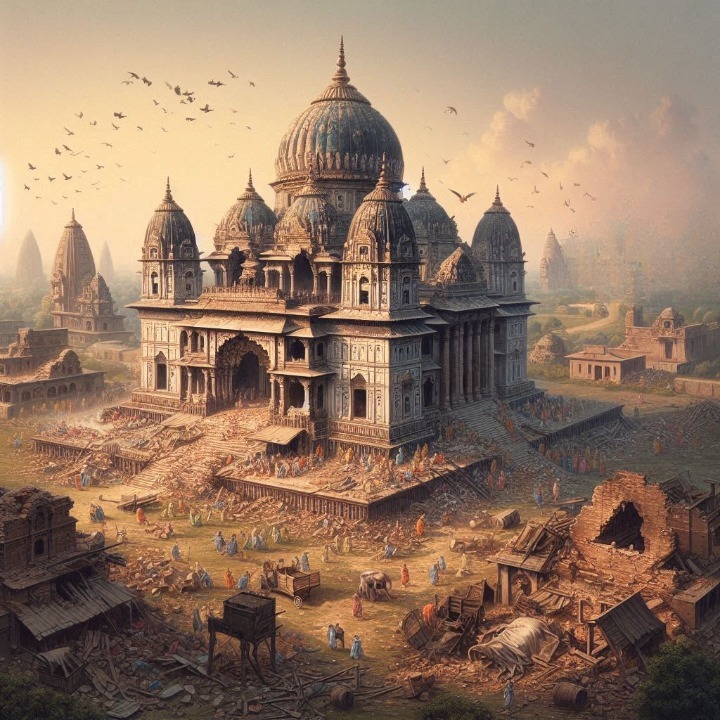The Ram Janmabhoomi-Babri Masjid dispute in Ayodhya, India, is one of the most contentious and long-standing issues in the country’s history. This dispute, rooted in religious, cultural, and historical significance, has shaped the socio-political landscape of India for centuries. This article delves into the intricate details of the conflict, tracing its origins, key events, and the eventual resolution through a landmark Supreme Court verdict.
Origins of the Dispute of Ram Janmbhoomi
The roots of the Ram Janmabhoomi-Babri Masjid dispute date back to 1528 when the Mughal emperor Babur ordered the construction of the Babri Masjid in Ayodhya, then referred to as Barabanki Masjid. Historical accounts, including Babur’s autobiography ‘Baburnama’ and writings by foreign authors like Joseph Tieffenthaler and Francis Buchanan, suggest that the mosque was built over the ruins of a pre-existing Hindu temple believed to mark the birthplace of Lord Rama. This narrative has fueled the belief among many Hindus that the site is sacred and deserves restitution as a place of worship.
Rising Tensions and British Intervention
The 1850s marked a significant escalation in tensions between Hindus and Muslims over the site. During this period, Hindus began to worship at the outer courtyard of the Babri Masjid, leading to frequent clashes between the two communities. In an attempt to manage the conflict, British authorities intervened by erecting barriers to separate the inner and outer courtyards of the mosque. This arrangement allowed Muslims to continue their prayers inside the mosque while Hindus worshipped outside. However, this compromise did little to ease the underlying tensions.
In 1885, a Hindu priest made a formal request to build a temple on the Ram Chabutra, a raised platform outside the mosque, but the British administration denied the request. This incident underscored the growing Hindu aspirations to reclaim the site, setting the stage for future confrontations.
Archaeological Findings and Legal Battles
The post-independence era saw significant developments in the dispute. In 1949, an idol of Lord Rama mysteriously appeared inside the Babri Masjid, sparking a series of legal battles. Hindus viewed this as a divine sign and sought permission to worship the idol, while Muslims demanded its removal, arguing that it was placed there illegally. This incident intensified the communal divide and legal complexities surrounding the site.
The 1970s brought a new dimension to the dispute with the archaeological findings of B.B. Lal. His excavations suggested the presence of a temple beneath the mosque, providing material support to the Hindu claims. These findings reignited the Ram Janmabhoomi movement, a campaign advocating for the construction of a Ram temple at the disputed site.
In 1986, the Rajiv Gandhi government took a decisive step by allowing Hindus to enter the Babri Masjid for worship. This decision was met with widespread protests from the Muslim community, further deepening the communal rift. The legal and political battles continued to escalate, drawing in various stakeholders, including political parties and religious organizations.

Demolition of Babri Masjid and Aftermath
The dispute reached a critical juncture on December 6, 1992. A large rally organized by the Vishwa Hindu Parishad (VHP) and Bharatiya Janata Party (BJP) turned violent, resulting in the demolition of the Babri Masjid by Hindu activists. This act of destruction led to widespread riots across India and neighboring countries, causing significant loss of life and property. The demolition of the Babri Masjid is considered one of the darkest chapters in modern Indian history, highlighting the volatile nature of the conflict.
The Supreme Court Verdict and Resolution
After decades of legal battles and socio-political turmoil, the Supreme Court of India delivered a landmark verdict on November 9, 2019. The court awarded the disputed land to a trust for the construction of a Ram temple, recognizing the significance of the site to the Hindu community. Simultaneously, the court allocated an alternate five-acre plot to the Muslim community for the construction of a mosque, seeking to balance the interests of both groups.
The Supreme Court’s decision was a monumental step towards resolving a dispute that had deeply divided the nation. The verdict was based on extensive archaeological evidence, historical accounts, and legal arguments presented by both sides. By acknowledging the religious and cultural sentiments associated with the site, the court aimed to foster reconciliation and peace.
Moving Forward: Building Bridges
The resolution of the Ram Janmabhoomi-Babri Masjid dispute marks a significant milestone in India’s journey towards communal harmony. The construction of the Ram temple and the allocation of land for a mosque symbolize a new era of coexistence and mutual respect. It is an opportunity for the nation to heal from past wounds and build a future based on understanding and unity.
As the construction of the Ram temple progresses, it is essential for all communities to come together and support initiatives that promote inclusivity and respect for diverse beliefs. The lessons learned from this dispute highlight the importance of dialogue, empathy, and the rule of law in resolving conflicts.
In conclusion, the Ram Janmabhoomi-Babri Masjid dispute is a testament to the complex interplay of history, religion, and politics in India. The journey from the construction of the Babri Masjid to the Supreme Court verdict has been marked by significant challenges and profound lessons. As India moves forward, it is crucial to embrace the spirit of reconciliation and work towards a future where diversity is celebrated, and unity prevails.



